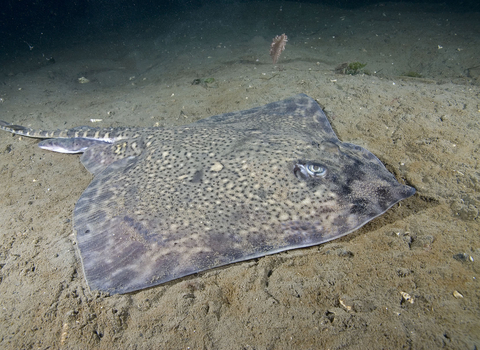
Thornback ray ©Paul Naylor www.marinephoto.co.uk
Thornback ray
The most commonly encountered ray around the British Isles, it's easy to see where the thornback ray got its name from - just check out the spines on its back!
Scientific name
Raja clavataWhen to see
January to DecemberTop facts
Stats
Length: Up to 139cmWeight: Up to 18kg
Average Lifespan: Can live for around 15 years
The thornback ray is listed as Near Threatened on the IUCN Red List
